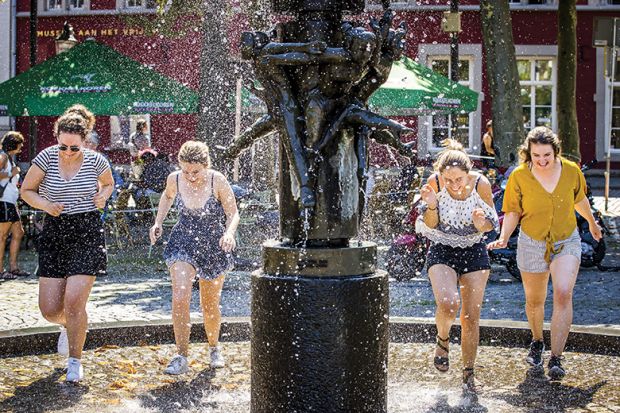View the THE Young University Rankings 2021 results
Founded in 1976 as a university with a single medical faculty and just 50 students, Maastricht University has come a long way. It is now a comprehensive university with six faculties, more than 20,000 students, 4,500 staff members and a yearly budget of almost €500 million (£430 million). We are proud to be consistently placed in the top 10 of the Times Higher Education Young University Rankings, while maintaining excellent positions in several subject rankings. How did we get there so fast, and what does this mean for our future?
Without doubt, the founders of Maastricht University made a daring choice when they started our institution by following a simple principle: do not be a copycat, but try to be different from your older and more established peers. With a grass-roots, sometimes rebellious spirit, they set out to be an innovator in education, becoming the first European University to focus on problem-based learning across the whole course spectrum. Innovation was always a leading principle when we were growing, adding new faculties and institutes, designing programmes not based on tradition but responding to current-day challenges that need to be addressed by a knowledge institution.
In addition, the ambition was to become a truly international university, not only due to our location in the heart of Europe, but also building on the significance of the Maastricht Treaty (officially known as the Treaty on European Union) as a cornerstone for European unity and integration. Over the years, we have successfully built a world-class European-centred education and research offer taking a proactive role in fostering cooperation between European higher education institutions. This is why we define ourselves now as the European University of the Netherlands. The use of the international classroom as an interactive space for students and professors to engage in intercultural dialogue helps us to make this connection and contributes to our diverse and inclusive community.
Our research has always been based on a transdisciplinary vision focused on societal challenges connecting science and engineering with the social sciences, humanities and medicine. This contextual approach, as well as relying on English as the academic lingua franca, has made us a truly international institution, where today more than 50 per cent of our students and 40 per cent of our academic staff are non-Dutch and internationalisation at home has become a way of life.
So, where do we go from here, in a year where we celebrate our 45th anniversary? Our challenge is to build on the spirit that made us a very special institution. One of the ways to achieve this is connecting to like-minded spirits – that is, other young universities – to build strong networks to stimulate each other to stay innovative and exchange ideas and practices. Young universities have a special dynamic; they are more adaptive and can induce change rapidly and efficiently, probably more so than institutions built on hundreds of years of traditions. As co-founders of the YUFE (Young Universities for the Future of Europe) Alliance – one of the first European Universities initiatives, which includes nine other young universities and several partners from the business world and civil society – we are trying to define the future European University landscape.
It is a landscape that we foresee as a level playing field by fighting inequality, offering excellent education and research without being elitist, and producing graduates that as active citizens will contribute to a better Europe in a global context. It is a landscape where we will build bridges between our research and citizens’ needs, thereby moving universities to the centre of society. Through these activities, we will continue to break down academic silo thinking, for example by engaging in triple- and quadruple-helix activities in co-creation with the public and private sector.
We, therefore, have created the Brightlands ecosystem, a network of four regional campuses where we facilitate knowledge transfer on important topics such as the future of healthcare, circularity and industry, artificial intelligence and food. With these initiatives, we are linking regional themes to global solutions while increasing employability within our immediate environment.
Clearly, we intend to remain a dynamic institution but, in the end, staying young also means maintaining an open academic community where the grass-roots spirit of our founders is still alive. It is important to keep this in mind when we draft the future and when we ask students and staff to inspire us with ideas to try new things and always remain interestingly different. If we manage to achieve this, we can surely hope to stay forever young.
Martin Paul is president of Maastricht University.
The THE Young University Rankings 2021 will be published at noon BST on 23 June.
POSTSCRIPT:
Print headline: Fountain of youth
Register to continue
Why register?
- Registration is free and only takes a moment
- Once registered, you can read 3 articles a month
- Sign up for our newsletter
Subscribe
Or subscribe for unlimited access to:
- Unlimited access to news, views, insights & reviews
- Digital editions
- Digital access to THE’s university and college rankings analysis
Already registered or a current subscriber? Login







